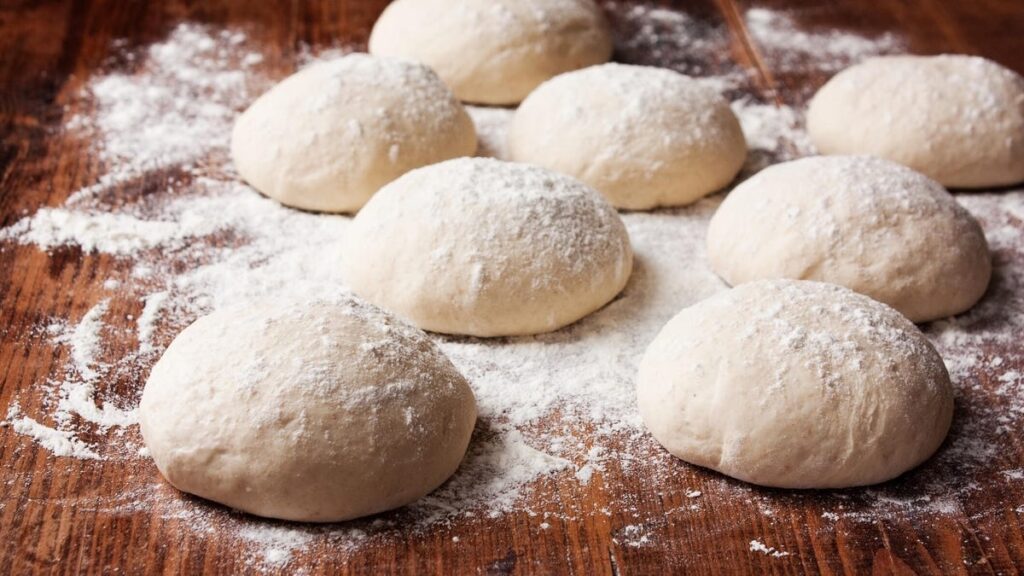Making your own pizza dough at home can’t be that hard, right? You might be surprised to learn that the Italian delicacy requires quite a bit of manual labor for mere minutes of post-preparation enjoyment. Yet we often find ourselves continuing to flour the countertop to roll out even more mediocre homemade dough. But what can home cooks do to seriously improve their homemade pizzas?
Mike Alaridi, executive chef of Virgin Hotels Chicago (who happens to make a damn-good pizza), advises amateur chefs to “just keep it simple and enjoy the process.”
Making pizza dough from scratch might be easy for a seasoned pizza chef, but Alaridi assures us that any novice pizzaiolo/a who may be struggling to achieve golden crust perfection can and will master the art of dough-making if they follow these seven easy steps.
Use high-quality flour
No matter the recipe, you’ll want to ensure that the most important ingredient — the flour — is double zero, a.k.a. “00” or “doppio zero.” It’s ideal for pizza and made from the soft, white endosperm of a wheat kernel (sans bran and germ), which is high in protein and starch. “This [also] helps develop the gluten,” says Alaridi. Gluten creates the elasticity of the dough that yields its craveworthy structure.
Dissolve salt and yeast beforehand
These are not ingredients to mix into the dough separately or at different moments. You’ll want to guarantee even distribution for a crust that rises consistently. Remember to use warm water (between 100 and 110 degrees for active dry yeast) to activate the yeast. If it’s too hot, you’ll kill it.
Aim for a wetter dough
“A wetter dough, around 60-75% hydration, can result in an airier crust,” says Alaridi. To achieve this texture, simply add more water in small volumes. And if you’re good at math, break out the kitchen scale and use the formula “weight of water/weight of flour x 100” to calculate the precise hydration percentage.
Knead the dough by using the stretch-and-fold technique
This helps to develop the aforementioned gluten. Flour your surface, grab a section of dough and gently pull the dough upwards. Bring this stretched section back towards you, folding it into the center. Rotate the dough and repeat this process until you’ve hit it from all angles. Once finished, allow the dough to rest for 30 minutes before dividing it into balls. This will allow for the gluten to relax and the dough to rise.
Allow for fermentation
Pizza dough shouldn’t be cooked right away. At bare minimum, allow at least 12 hours of fermentation before use. For many chefs, including Alaridi, cold fermentation is always the preferred method. “Leave it in the fridge for 24-72 hours to enhance flavor and texture,” he recommends.
Be mindful of toppings and temperature
Avoid overloading the dough, as too many toppings can weigh it down and make it soggy. “Try to use your hands to open and shape the dough (rather than using a rolling pin) for a more authentic texture,” says Alaridi, who also reminds amateur cooks to only use refrigerated dough balls once they’ve returned to room temperature.
Don’t be afraid to experiment
Failure is typically not an outcome when it comes to introducing new pizza flavors. (Except when you add pineapple. Kidding…kind of.). Zhuzh up your favorite recipe by incorporating unique ingredients into your dough, like Alaridi’s personal favorites of fresh herbs and different types of yeasts (such as rapid-rise yeast or pizza crust yeast). An inspired chef is often a satiated chef. Have fun — it’s pizza!
Read the full article here

